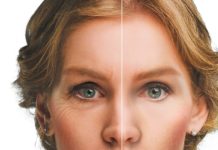Chronic Obstructive Pulmonary Disease (COPD) has emerged as the third leading cause of death on a global scale, responsible for a staggering 3.23 million deaths in 2019 alone. In the United States, over 16 million adults grapple with this debilitating condition, while millions remain undiagnosed. These alarming statistics underscore the silent epidemic that COPD represents, silently sweeping across our nation and the world. However, there is hope! By exploring the valuable resources below, you can access life-changing information about COPD.
Demystifying COPD: A Brief Overview
Chronic Obstructive Pulmonary Disease (COPD) is a progressive lung disorder characterized by persistent airflow limitation and an abnormal inflammatory response within the lungs. This condition leads to troublesome symptoms such as shortness of breath, persistent coughing, and increased mucus production.
Over time, COPD steadily diminishes lung function, making breathing and everyday activities increasingly challenging. It serves as an umbrella term encompassing various lung conditions that collectively impede normal breathing.
Key Types of COPD: Chronic Bronchitis and Emphysema
COPD primarily manifests as two distinct conditions: chronic bronchitis and emphysema. Chronic bronchitis involves inflammation of the bronchial tubes, resulting in excessive mucus production and a lingering, productive cough.
Emphysema, conversely, is characterized by damage to the alveoli, the tiny air sacs within the lungs. This damage reduces the surface area available for gas exchange, leading to pronounced shortness of breath. Both chronic bronchitis and emphysema contribute to restricted airflow and breathing difficulties.
Root Causes and Risk Factors
The principal cause of COPD is extended exposure to irritants that inflict damage upon the lungs and airways. The most prominent culprit is cigarette smoke, including second-hand exposure. Additional risk factors encompass prolonged occupational exposure to dust, chemicals, and indoor or outdoor pollution.
A smaller percentage of individuals may develop COPD due to genetic factors, such as a deficiency in the protein alpha-1 antitrypsin. Age and a history of frequent lung infections also elevate the risk of COPD development.
Identifying Symptoms and Progression of COPD
Early Indications of the Disease
During its initial stages, COPD may exhibit subtle symptoms. Early warning signs encompass sporadic coughing and increased mucus production. Regrettably, some individuals may dismiss these as ordinary cold symptoms or age-related alterations.
Shortness of breath may gradually emerge, particularly following physical exertion. Respiratory infections may become more frequent, and a sense of persistent fatigue may prevail. These initial signs can often be disregarded, rendering early diagnosis a formidable challenge.
Common Symptoms
As COPD advances, its symptoms become more conspicuous. Even simple activities like walking or dressing can trigger pronounced shortness of breath. A perpetual, chronic cough, often accompanied by mucus production, can become burdensome.
Chest tightness, a sensation akin to a constriction around the chest, is also frequently experienced. These symptoms signal a heightened severity of COPD, exerting a significant impact on an individual’s quality of life, daily routines, and overall well-being.
Staging the Progression
COPD is classified into four stages according to its severity:
Mild (Stage 1): Featuring only mild airflow restrictions, which may go unnoticed by the patient.
Moderate (Stage 2): Marked by deteriorating airflow and noticeable breathlessness, especially after exertion. Chronic cough may also develop.
Severe (Stage 3): Exhibiting further diminished airflow and increased breathlessness. Exacerbations become more frequent, adversely affecting the patient’s quality of life.
Very Severe (Stage 4): An advanced stage characterized by severely restricted airflow. Symptoms become chronic and debilitating, with the possibility of respiratory failure.
The Vital Importance of Early Detection
Detecting COPD in its nascent stages is of paramount importance for managing its progression. Early diagnosis permits timely interventions that can decelerate the disease’s advancement, enhance the quality of life, and mitigate potential complications.
With prompt medical guidance, lifestyle adjustments, and suitable treatment, the frequency of disease exacerbations can be minimized, hospitalizations reduced, and overall prognosis improved. Additionally, early recognition of COPD fosters patient education, enabling informed decisions and nurturing a proactive approach to health.
Examining the Causes and Risk Factors of COPD
Smoking: The Primary Culprit
Cigarette smoking stands as the predominant cause of COPD, accounting for the overwhelming majority of cases. The harmful chemicals contained in tobacco inflict damage upon lung tissue, resulting in diminished lung function over time.
While both occasional and long-term smokers face risk, the danger escalates in tandem with the duration and quantity of smoking. Passive or second-hand smoke exposure can also contribute, though direct smokers remain at the highest risk.
Environmental Influences
Exposure to environmental pollutants, particularly in heavily industrialized or urban areas, can constitute a significant cause of COPD. Prolonged exposure to harmful chemicals, dust, and fumes in certain occupations like mining or construction can lead to deteriorating lung health.
In regions characterized by elevated levels of air pollution or within households utilizing biomass fuels for cooking and heating, the risk of COPD development is notably heightened.
Genetic Factors: Alpha-1 Antitrypsin Deficiency
Although less common, genetic factors can render individuals susceptible to COPD. One noteworthy example is Alpha-1 Antitrypsin Deficiency (AATD).
This hereditary condition results in an insufficient presence of the Alpha-1 Antitrypsin protein, which reduces lung protection against inflammation. Individuals with AATD are more predisposed to COPD, even in the absence of common risk factors such as smoking.
Age and a History of Respiratory Infections
As individuals age, the lungs naturally lose some of their elasticity, rendering them more susceptible to diseases like COPD. Furthermore, a history of serious respiratory infections during childhood can inflict damage or hinder lung growth, predisposing individuals to COPD later in life.
Even during adulthood, recurrent lower respiratory tract infections can expedite the decline in lung function, escalating the risk.
Preventing COPD: Proactive Measures
Smoking constitutes the leading cause of COPD. Ceasing this habit significantly reduces the risk, halts the disease’s progression, and augments lung function. Every cigarette smoked inflicts harm upon the lungs; quitting represents the most efficacious step for preventing and managing COPD.
Occupational exposure to dust, chemicals, and air pollution can exacerbate lung conditions and trigger COPD. Employing protective gear, ensuring adequate ventilation, and avoiding polluted areas serve to protect lung health, averting the onset or aggravation of COPD.
Early detection and timely intervention can retard the progression of COPD. Regular check-ups permit physicians to monitor lung function and offer guidance on preventive measures. Detecting subtle changes allows individuals to adapt their lifestyles and treatments, ensuring improved respiratory health.
Individuals living with COPD confront a heightened vulnerability to respiratory infections. Vaccinations diminish the risk of these infections, averting complications, hospitalizations, and the potential exacerbation of the disease.
In conclusion, COPD stands as a significant global health challenge, ranking as the third leading cause of death across the world. Understanding its nature, risk factors, and symptoms is essential for early detection and management. Proactive measures, such as smoking cessation and protective actions against environmental pollutants, can play a pivotal role in prevention. Timely diagnosis and intervention can enhance the quality of life for individuals living with COPD, offering hope in the face of this silent epidemic.






















